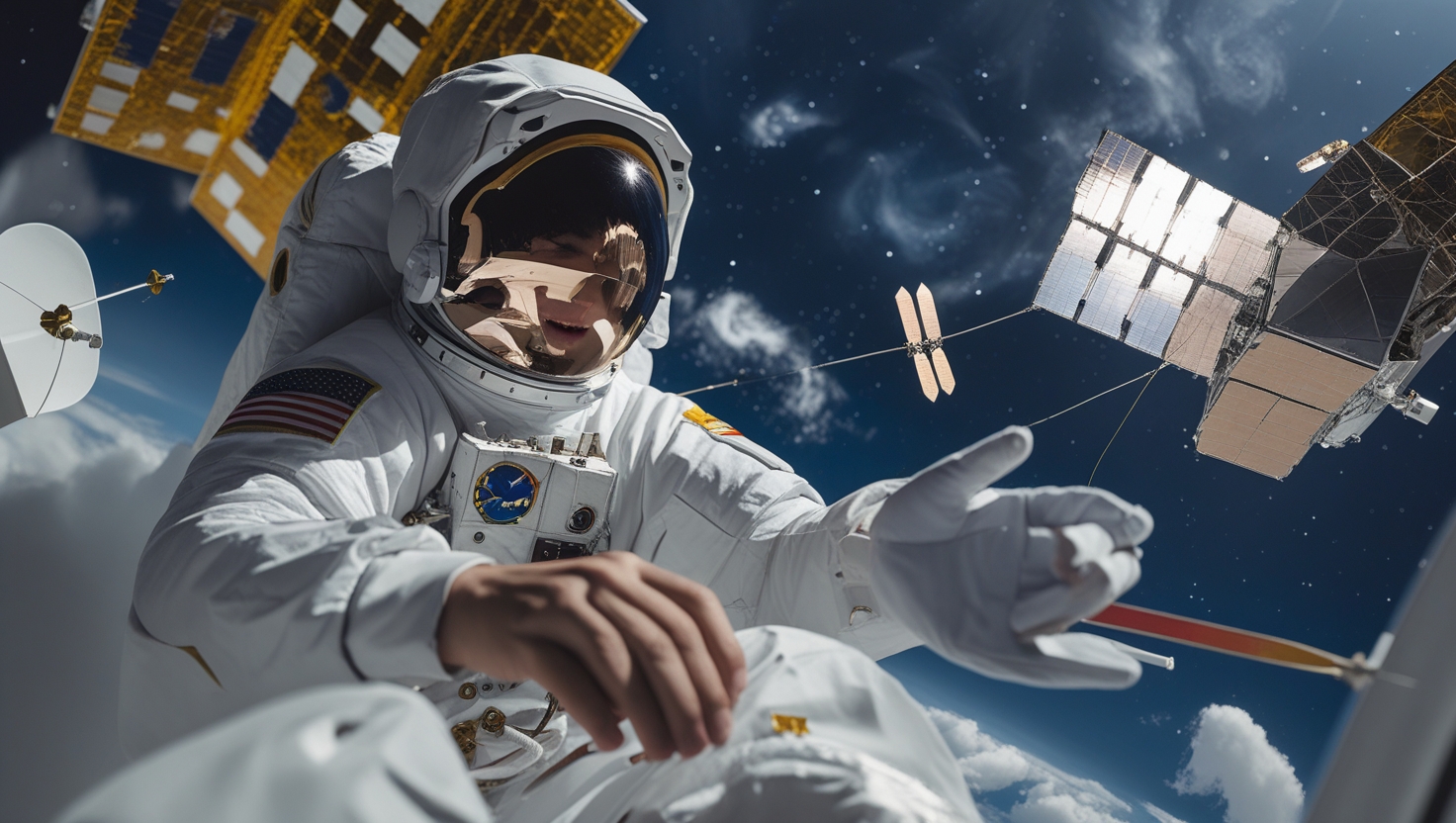Sattelitter are an important part of our modern world. From making phone calls to watching television and checking the weather, satellites help in many ways.
What Is a Satellite?
A satellite is any object that moves around a larger object in space. The Moon is a natural Sattelitter of Earth because it orbits our planet. But when we talk about satellites today, we usually mean artificial satellites—man-made machines launched into space to orbit Earth or other planets.
A Brief History of Satellites
The first artificial Sattelitter was Sputnik 1, launched by the Soviet Union on October 4, 1957. It was a small metal ball with antennas and could send radio signals back to Earth. This marked the beginning of the space age.
After Sputnik, many countries began launching satellites for different purposes, such as communication, weather, science, and military. Today, there are over 8,000 active satellites orbiting Earth.
Types of Satellites
Satellites are made for different jobs. Here are some common types:
1. Communication Satellites
These Sattelitter help with phone calls, TV broadcasts, and internet services. They are placed in geostationary orbit, which means they stay in one place above the Earth’s surface. Some famous examples are INSAT, Intelsat, and EchoStar.
2. Weather Satellites
Weather Sattelitter observe the Earth’s atmosphere and help meteorologists predict the weather. They take pictures of clouds, storms, and temperatures. Examples include NOAA and METEOSAT.
3. Navigation Satellites
Navigation Sattelitter help people find directions and track locations. These are used in GPS systems found in smartphones and vehicles. Examples include NAVSTAR-GPS (USA), GLONASS (Russia), and Galileo (Europe).
4. Earth Observation Satellites
These satellites take high-quality pictures of Earth to study agriculture, forests, oceans, and cities. They help with environmental protection, disaster management, and urban planning.
5. Scientific Satellites
These Sattelitter are used for space research and scientific studies. They help us learn more about space, stars, planets, and cosmic rays. An example is the Hubble Space Telescope.
6. Military Satellites
These Sattelitter are used for defense and surveillance. They help armies track enemy movement, guide missiles, and maintain security.
How Do Satellites Work?
Sattelitter work by orbiting the Earth or another planet. They are launched into space by rockets. Once in orbit, they use solar panels to get energy from the Sun and onboard computers to control their movement and functions.
Each Sattelitter has an antenna to send and receive signals. Ground stations on Earth communicate with the satellite, sending commands and receiving data.
Orbits of Satellites
Different satellites are placed in different orbits depending on their purpose:
1. Low Earth Orbit (LEO)
These satellites orbit very close to Earth, about 180 to 2,000 kilometers above the ground. They are used for Earth observation and communication (like Starlink). Their orbits are fast—around 90 minutes per orbit.
2. Medium Earth Orbit (MEO)
These satellites orbit at about 2,000 to 35,000 kilometers above Earth. Most navigation satellites like GPS are in this orbit.
3. Geostationary Orbit (GEO)
These satellites are about 35,786 kilometers above Earth and appear to stay in the same spot in the sky. This is useful for TV and weather satellites. They orbit once every 24 hours.
4. Polar Orbit
These satellites travel from the North Pole to the South Pole and can see every part of the Earth as it rotates. They are good for environmental and mapping purposes.
What Are Satellites Made Of?
A satellite is like a small machine with many parts:
- Structure: The frame holds everything together.
- Power System: Usually solar panels and batteries.
- Communication System: Antennas and transmitters.
- Control System: Helps keep the satellite stable.
- Thermal System: Keeps the satellite at the right temperature.
- Payload: The equipment that does the satellite’s main job, like a camera or sensor.

How Are Satellites Launched?
Satellites are launched into space by rockets. These rockets carry the satellite into orbit and release it at the correct height. Launching a satellite is a very careful process that requires planning, technology, and perfect timing.
Some popular launch vehicles are:
- Falcon 9 (SpaceX)
- Ariane 5 (ESA)
- PSLV and GSLV (India)
- Long March (China)
Uses of Satellites in Everyday Life
Satellites are part of our daily lives, even if we don’t notice them. Here are some examples of how satellites help us:
- Making phone calls across long distances
- Watching live TV broadcasts
- Using Google Maps for directions
- Monitoring natural disasters like hurricanes and floods
- Helping farmers with weather forecasts and crop planning
- Tracking airplanes and ships
- Studying climate change and pollution
Advantages of Satellites
Satellites have many benefits:
- Global Coverage: They can cover large areas and even the whole Earth.
- Real-time Data: They can send and receive information instantly.
- Remote Monitoring: No need for people to be present at the site.
- Reliable Communication: Especially useful in remote or disaster-hit areas.
Challenges and Risks
While satellites are very useful, they also face some problems:
- Space Junk: Broken satellites and debris can crash into working ones.
- High Costs: Building, launching, and maintaining satellites is expensive.
- Limited Lifespan: Most satellites work for about 10 to 15 years.
- Solar Storms: High-energy particles from the Sun can damage satellite systems.
- Security: Satellites can be hacked or jammed by enemies or criminals.
Future of Satellites
The future of satellites looks exciting. With more private companies like SpaceX, Blue Origin, and OneWeb getting involved, the number of satellites in space is increasing. Here are some future trends:
- Mega-constellations: Thousands of small satellites working together to provide global internet (like Starlink).
- Smaller and Cheaper Satellites: Known as CubeSats, these are easier to build and launch.
- Better Earth Monitoring: Satellites will help us fight climate change and protect the environment.
- Deep Space Exploration: Satellites will be used to explore Mars, Jupiter, and beyond.
Conclusion
Satellites are amazing machines that make our lives easier, safer, and more connected. From communication to navigation, science to security, satellites play a vital role in today’s world. As technology continues to improve, satellites will become even more important in solving global problems and exploring the universe.


